Social Media, Selfies and Self-Esteem: 4 questions to ask your teen and helpful messages to discuss13/5/2024
How can you support your teen’s development in the age of social media? Self-esteem development during adolescence is an important area of focus for psychology. Self-esteem refers to the judgements young people make about their worth as a person and is closely associated with mental well-being. The way that we are communicating with peers has changed dramatically over the past decade with the growth of social media platforms such as Facebook and Instagram. Although social media has made communication and keeping up with peers easier, it has brought about an added pressure to adolescent’s self-esteem development. It has never been easier to compare yourself to peers than it is right now. On social media, your life is on show and young people are able to create a beautiful ‘highlights reel’ which is often unrealistic and highly filtered. This in turn feeds comparison to unachievable standards and can leave you feeling not good enough. Here are some conversation starters to have with your adolescents as well as some helpful messages that we need to be sending about social media. Sit down with your adolescent and ask them: “What does it feel like when your post doesn’t get many likes?” Helpful messages to discuss:
Look at Instafamous celebrities’ profiles with your child and ask, “What do you think about this person’s profile? What does their life look like to you?” Helpful messages to discuss:
“How do you feel when you compare your number of ‘friends’ to other people’s number of ‘friends’?”
"What inspires you on your social media feeds?"
Helping your teens to think about their motivations behind posting up that hundredth sexy selfie will help them (and you) to think about healthier ways of getting validation and building self-esteem. It’s probably not going to drastically change their posting behaviour, but it might help them to see their online behaviour through a new lens. Through having this conversation, you might be able to come up with ideas about other ways to feel confident – such as learning about their strengths and building on them. This is how positive self-esteem is developed. It might even help you to reflect on whether your child has enough opportunities to experience success and develop their strengths. If not, think about how you can facilitate this by increasing their opportunities in the ‘offline’ world. Remember, social media is a big part of your teens life so understanding more about it will help you to show your interest in your child’s life bringing you closer together which is so important for your relationship. If you have concerns about negative impacts that social media is having on your child’s self-esteem and you are unsure how to tackle this, speak with a psychologist skilled in this area. Helping Teens Through Disappointment: 5 Compassionate Strategies for Uncontrollable Outcomes30/6/2023
by Jessica Cleary, Psychologist Like many parents in Australia I have a devastated teenager in the house after fruitless efforts trying to get Taylor Swift tickets this week. As parents, we strive to support our teenagers through life's ups and downs, including moments of disappointment that are beyond their control. Whether it's missing out on tickets to Tay Tay or facing other circumstances where they have no influence over the outcome, our role as compassionate and loving parents becomes crucial. By providing the right guidance and support, we can help our teenagers navigate disappointment and emerge stronger and more resilient. Here are five tips to assist you in helping your teenager through situations where they lack control, with love and understanding. 1) Practice active empathy: In moments of disappointment, actively empathise with your teenager's feelings and experiences. Put yourself in their shoes and try to understand the depth of their emotions. Let them know that you are there to listen and support them wholeheartedly. By showing genuine empathy, you create a strong bond and provide reassurance that they are not alone in their struggles. 2) Avoid comparisons: Avoid comparing your teenager's disappointment to others' experiences or minimising their feelings. Each person's disappointments are valid and unique to them. Remember that everyone has different expectations and sensitivities, and what might seem insignificant to one person can be deeply disappointing for another. By avoiding comparisons, you create an atmosphere of compassion and respect for their individual emotions. Any sentence that starts with "At least..." is one to be avoided. 3) Encourage self-expression: Once the dust settles a little, encourage your teenager to express their disappointment through creative outlets, such as writing, painting, or playing music. These forms of self-expression can provide a cathartic release for their emotions and allow them to process their disappointment in a constructive way. By embracing their creativity, you empower them to channel their feelings into something meaningful and transformative. 4) Be patient and non-judgmental: It's essential to be patient and non-judgmental when supporting your teenager through disappointment. Avoid offering quick solutions or trying to snap them out of it. It's very uncomfortable for us to see our children distressed so often we can try to shift them out of their 'mood' to ease our own distress. That's not what's needed here. Instead, provide them with the space and time they need to process their emotions and navigate their own path to healing. By demonstrating patience and non-judgment, you foster an environment of trust, emotional safety and unconditional love. 5) Nurture self-compassion: In situations where disappointment arises from circumstances beyond their control, it's crucial to nurture self-compassion within your teenager. Encourage them to be kind to themselves and avoid self-blame or negative self-talk. If you notice any of this type of talk, gently remind them that disappointments are not personal failures and that they are not defined by external outcomes. Teach them to practice self-care and self-compassion by engaging in activities that promote their well-being, such as spending time with loved ones, pursuing hobbies, or engaging in mindfulness practices. It’s so hard to bear witness to our children’s experience of disappointment. Remember that your support and understanding are invaluable in helping your teenager face these challenges and emerge stronger. These practices can help your teenager embrace the uncertainties of life, navigate disappointments, and forge a path towards a fulfilling and resilient future with a compassionate heart.
Alyce Galea, Psychologist Emotions such as fear, anger, grief and many others can negatively affect us long after the original event that caused them.
When our body fails to “let go” of these emotions we can find ourselves with unexplained hatred, self-sabotaging behaviours, destructive beliefs, phobias and many chronic physical problems. Why Do People Bottle Up Their Emotions?
What Happens When You Pent Up Your Emotions
Ways to release bottled up emotions
Book an appointment with one of our friendly psychologists for more support Alyce Galea, Psychologist It is essential that our young people learn how to manage the intensity of their emotions, and work through their emotions in a healthy and helpful way.
It is not something that that we are inherently born knowing how to do, so it is important that parents and/or caregivers help facilitate a safe space for children to learn emotion regulation. Here are 5 important tips to help you help your children: 1. Be warm, accepting and responsive to your child’s emotional needs
3. Accept, support and show empathy to validate their feelings
4. Be patient
5. Try not to ignore, dismiss, discourage, punish or react negatively to emotions, especially negative emotion
By being in touch with your own emotions and being mindful of how you manage them, you can be a role model for your children and help them feel safe to express their own emotions in a healthy and helpful way. For more parenting support or for support for your child, please contact the clinic to book an appointment. Alyce Galea, Psychologist It is most likely the time that most students dread...Exam time!
Although for some people, stress can motivate them to be more organised and devote more time to study, for others, prolonged stress can be counterproductive and debilitating. For a lot of students, exam time can be a daunting and stressful period, but it doesn’t have to be! Here are some tips that might help you to manage stress around exam time... 1. Think about why you are stressed:
2. Take time to plan:
3. Make self care a priority
4. Rest
5. Set good boundaries
Above all, remember that this period of stress is only temporary! If you continue to feel stress or anxious after the exams, it might be helpful to speak to someone (a teacher, family member, friend, psychologist) about what you can do to manage these feelings next exam period. Book an appointment with one of our psychologists for more support with school issues and exam stress Jessica Cleary. Director & Psychologist Sometimes it is challenging getting teens the psychological help they need. Here are some tips to help you...
Abby Elder. Provisional Psychologist “It can’t be that bad!” My doctor exclaimed while studying my face with a look of pity. I had entered his consulting room in a hobbled posture trying to describe my situation in a wobbly voice. For the last week the pelvic pain I had become accustomed to feeling since I was thirteen years old had become extreme, leaving me bedridden for four days. I did not know it but I was experiencing a flare up of pain symptoms related to endometriosis. I am now struck that I cannot recall the exact sensation of physical feeling of pain or its severity. What I can remember is the emotional impact of the symptoms of chronic pain. You might be reading this because your child has been diagnosed with endometriosis. Or perhaps a young person you know is experiencing chronic pain but not yet diagnosed with a disorder. Either way the impacts of chronic pain, especially pain related to endometriosis, can have significant negative impacts on a young person’s mental health, as well as members of their family. This blog post cannot provide medical advice, but will provide strategies to support a young person who is experiencing chronic pain to get the help they need. Keep reading for strategies to better understand pain, communicate with family members about chronic pain, and why it is important for your child to be their own pain spokesperson. Endometriosis - a chronic pain disorder Endometriosis is a medical condition that affects roughly 1 in 9 Australian females. It is considered chronic because there is no cure and those diagnosed with endometriosis can experience symptoms their entire lives. Medical research is still defining endometriosis, from its cause, effective diagnosis, and the incredible range of symptoms and severity, as well as how to best treat those symptoms. This uncertainty can leave young people and their families grasping for solutions, like they are trying to solve a complex puzzle with no guiding picture. Endometriosis tip sheet written by Endometriosis Australia Chronic pain and youth mental health Chronic pain can impact all people at any age. Pain Australia estimates that one in four young Australians experience a form of chronic pain. Children and adolescents can be experienced through endometriosis as well as migraines, sports injuries and symptoms of chronic diseases such as juvenile arthritis. An important difference about chronic pain is that it is a lifelong condition that ebbs and flows. This is different from acute pain such as breaking an arm. While an acute pain is distressing, it will usually come with an expiration date of disruption to one’s life. Because chronic pain can be expected to be felt in some way across a person’s life, an individual can develop feelings of hopelessness and helplessness related to their pain. Disruptions in a young person’s life can mean missing large amounts of school, difficulty socializing with friends, and loss of enjoyment during activities and events. Pain Australia estimates young people experience disruptions in their physical activity at a higher rate than adults. Young people are still defining their identities, what they are good at and what they want to pursue with passion. The emergence of chronic pain can impact this development. Parents and caregivers who are supporting young people living with chronic pain must consider not just the physical sensations, but the emotional toll of isolation and disappointment. You can help a young person who is experiencing chronic pain by defining pain. Pain is a common reality in our society but the reasons a person feels pain are not well understood. By helping young people to understand the biological and psychological components of pain you can empower them to seek the support they need to better enjoy their lives.
Supporting the family unit For families supporting a young person experiencing chronic pain, the start of symptoms can be a time of disruption. A previously active child might suddenly be limited in their capacity to complete previously enjoyable activities. Other members of the family might be affected, with parents and caregivers needing to miss work, and siblings missing out on fun activities. An acknowledgement that everyone is impacted can be a start for families to find a new way to support each other. You might consider making a specific time to come together as a family and put the disruptions into words. It might be helpful to also focus on what each family member needs to feel supported to brainstorm actions to take. After this initial family discussion consider asking your child who is experiencing chronic pain what level of information they would like to share ongoing with siblings and others. There are times when chronic pain can affect most parts of a young person’s life. If family members are not kept informed in an appropriate way, they might feel excluded and miss out on ways they can support their loved one. Share this tip sheet for siblings of children with chronic pain here developed by The Pain Management Network Are you faking all this? People who live with chronic pain become skilled at masking and getting on with it. This should be worthy of praise, but can also invite criticism from well meaning (or maybe not!) friends, family, and medical professionals. Especially when a person finds themselves unable to hide the pain symptoms. “It can’t be that bad,” My doctor had said in frowning exasperation. I did not have the communication skills at that time to challenge my doctor, or to explain my needs. Instead I turned inward to try to solve my complex pain puzzle. I remember thinking, “Maybe it isn’t that bad?” The Pain Management Network encourages parents to make children the spokesperson of their pain when possible. Maybe a young person verbally describes their symptoms at medical appointments, or parents and children brainstorm which pain management strategies work best for the child.
Making the young person their own pain spokesperson will help them develop assertive communication skills for describing their pain with the knowledge their parents can back them up when needed. This may increase a child’s sense of autonomy, and decrease feelings of helplessness associated with chronic pain. It can also stop those nagging feelings they might have when a medical professional might appear dismissive. A firm reminder to themselves that they are not making it up, that their physical needs are worthy of being communicated. If you are after support for managing Endometriosis or chronic pain, please contact the clinic.
Alyce Galea. Psychologist Talking with a highly emotional teenager can be tough! When our emotions are heightened, our ability to access and use the thinking part of our brain can become really difficult, and it can be almost impossible for us to use rational thought.
Here are some tips on how best to communicate with your teen when they are in an emotional state: 1. Remain calm and check in with yourself. There is very little benefit to trying to communicate with your teen when they are in a heightened state, and the same goes for when you are experiencing big emotions.The most helpful thing you can do in this situation is to check in with yourself and try to remain calm as best you can. If your teens can sense your calm, they are more likely to calm themselves and be in a better position to effectively communicate with you. There is a scientific principle called neuroception that helps us understand this - when we are in the presence of a calm person, our brain picks up on those calming signals and our brain understands that we are safe. Being safe leads to feelings of calm. 2. Be present. Although your teen may not want to have a conversation with you, it’s important that they know that you are there for them and available to talk when they are ready. That gesture alone might be enough for them to trust that you are open and willing to hear them out. 3. Take a strengths based, non judgemental approach. Although you might not agree with how your teens behave, or how they should feel in a response to a certain situation, it’s helpful to provide a safe, non judgemental space for them to vent and talk it out. 4. Offer to listen and comfort, rather than “fix” things. Your job is not to fix things, per se, but to coach your children, offer the support they need and encourage them to practice skills of emotion regulation and problem solving, until they find what works for them. The way we problem solve and deal with our emotions, may not be particularly helpful for our teens. It’s important to remember that when we come to the solution for a problem ourselves, often with support from another person, we’re more likely to be able to make sense of the problem solutions and put them into practice - rather than when somebody imposes their solutions on us. 5. Expect rejection and avoid feeling disheartened. Adjust your expectations about how the conversations might go, so that you can avoid feeling disheartened or taking things personally. Your teen might test you a little until they can trust that you genuinely care and want to help them. It may take some time and persistence to reconnect with your teen, don’t be put off. If you’re willing to make the changes to better communicate with them, they will come through. I hope this has given you some helpful tips to be able to alter the way you communicate with your teens to build a stronger connection with them. Contact the clinic if you are in need of parenting support or support for your teen Alyce Galea, Psychologist Early on in therapy, teenagers often find it hard to identify the stressors or triggers that might be contributing to their difficulties. One way that you can start to identify your current stressors is by doing the stress bucket activity. I often like to conceptualise our wellbeing as a bucket.
Stressors can be categorised into three domains:
Once we have determined what our current stressors are, it is important to identify those stressors that you have some control over, and those that you have absolutely no control over. That way, we can then focus on problem solving ways of relieving the stress of situations that you may be able to change, even slightly. . Two ways we can learn to relieve stress are:
For example: Regularly practicing relaxation or deep breathing, exercise, starting a journal, listening to music.  Alyce Galea is a psychologist at Hopscotch & Harmony who works with adolescents and young adults across a wide range of settings, including schools and community mental health services (Headspace). She is particularly interested in supporting young people experiencing mood and anxiety disorders, low self-esteem and interpersonal difficulties; and has a particular interest in working with young women exhibiting traits of Borderline Personality Disorder. Hilary Sanders, Psychologist Life as a teenager can be tough. We all remember what that was like, right? Your hormones are racing, your body is changing, you're juggling competing and increasing demands at school and at home, perhaps also sport and work commitments. You want to be unique, yet at the same time fit in. Impress your friends, your parents, your teachers — There's a lot going on! Now, imagine on top of this, you are also questioning your sexual orientation. You have noticed you're not attracted to the opposite sex in the same way as your peers. However, attraction to the opposite sex (heterosexuality) is the most commonly expressed sexual orientation in society, so what does that mean for you? Sexual orientation (or sexual identity) refers to the enduring or evolving pattern of one's sexual, romantic, and/or emotional attraction to a particular sex. Commonly used terms to describe one's sexual orientation include, amongst others, heterosexual/straight, homosexual (gay, lesbian), bisexual, queer, asexual, and pansexual. The acronym LGBTIQA+ (Lesbian, Gay, Bisexual, Transgender, Intersex, Queer, Asexual, and others) incorporates sexual orientation, gender identity and intersexuality, and is often used to refer to sexual identities that differ from heterosexual. It is important to note that these "labels" do not rigidly or personally apply to everyone, and some would prefer to not use labels at all. Sexual orientation is diverse, and unique to the individual. Living in a heteronormative society can accentuate a sense of difference when you do not identify as heterosexual. Feeling "different" is especially challenging during adolescence because this developmental stage prioritises social belonging and acceptance. The threat of judgment, ridicule, or rejection from others can be overwhelming for young people during this time, and can influence how they express their sexuality, if at all. Research has also found that non-heterosexual young people are more likely to experience mental health difficulties, such as anxiety and depression, compared to other young people (see this link for more information). We want to ensure our young people feel supported as they learn about themselves and their emerging sexual identities. How we approach sexuality can have a lasting impact on their relationship with us, and their emotional wellbeing, so it makes sense to reflect and think about it. It’s never too soon, or too late, to begin the conversation! If you've been asking yourself "What should I say? What if I say the wrong thing? How do I approach my teen, if at all?", the following tips may help.
Helpful services and links: - Q Life: QLife is Australia’s first nationally-oriented counselling and referral service for LGBTIQA+ people, offering peer supported telephone and web based services between 3:00pm and midnight every day of the week, all around the country. You can call them (between 3pm and midnight) on 1800 184 527 or chat online: https://qlife.org.au/ - BeyondBlue 'Families Like Mine' resource: 'Families like mine' is a multimedia guide that offers practical advice to families of young gender diverse people, same-sex attracted and bisexual people, and those who are questioning their sexuality or gender identity: https://www.beyondblue.org.au/who-does-it-affect/lesbian-gay-bi-trans-and-intersex-lgbti-people/families-like-mine - Kids Helpline: Kids Helpline is a free, private and confidential 24/7 phone and online counselling service for young people aged 5 to 25. Kids can call on 1800 55 1800. Their website also has information for parents: https://kidshelpline.com.au/parents/  Hilary Sanders is a psychologist at Hopscotch and Harmony Werribee and Belmont who is passionate about supporting people of all ages, however has a particular interest in working with adolescents and adults. Hilary values diversity, and encourages individuals to celebrate their uniqueness- she believes human difference is what makes life interesting! An LGBTIQA+ advocate, Hilary acknowledges the complex nature of sexuality, and is driven to support individuals experiencing challenges arising from sexual diversity You are surely familiar with the concept of separation anxiety, particularly in children. The tears and clinginess that could be experienced when a child first separates from their parents. Of course, it’s very appropriate for young children to experience some mild anxiety when they first start school or spend their first night away, though with some practice, are soon able to regulate themselves during times of separation because they know their caregiver will come back for them. Then there are children who are not able to regulate themselves and continue to show signs of distress for an extended period of time. In the Diagnostic and Statistical Manual of Mental Disorders - Fifth Edition (DSM-5, 2013), Separation Anxiety Disorder is categorised by showing developmentally inappropriate and excessive fear or anxiety concerning separation from those to whom the individual is attached for at least 4 weeks in children and adolescents (if not better explained by another condition such as refusal to leave home because of excessive resistance to change in autism spectrum disorder, amongst other conditions). In this most recent edition of the DSM-5, adults have now been included in this diagnosis, though the length of excessive fear lasts for more than 6 months. One of the major theories that inform separation anxiety is Attachment Theory, first founded by John Bowlby then extended by Mary Ainsworth. The basic perspective of Attachment Theory is that the kind of bonds we have in our early life shapes the kind of relationships we form as adults. The developing child builds up a set of models of the self and others, based on repeated patterns of interactive experience. These internal working models are thought to form relatively fixed representational models which the child uses to predict and relate to the world. A securely attached child will store an internal working model of a responsive, loving, reliable caregiver, and of a self that is worthy of love and attention and will bring these assumptions to bear on all other relationships. On the other hand, an insecurely attached child may view the world as a dangerous place in which other people are to be treated with caution, and see themselves as ineffective and unworthy of love. Within the first 6 months of life, parental responsiveness is a fundamental factor impacting the quality of attachment. This is where mirroring responses are crucial. The onset of a smiling response at 4 weeks marks the beginning of the cycles of interaction between the caregivers and their baby. The baby’s smile evokes a mirroring smile in their parent; the more they smile back the more the baby responds, and so on. These are called ‘mirroring’ responses because it is thought that what the baby sees when their caregivers copy their expressions, is in fact, themselves… i.e., they are developing their sense of self. The physical holding, protection, nurturing and caring that is also felt by the infant further creates the sense of inner security. Between 6 months and 3 years old, the goal for the child is to keep close enough to their caregiver, to use them as a secure base for exploration (i.e., separation) when the environmental threat is at a minimum, and to exhibit separation protest or signalling danger when the need arises. The over-anxious parent may inhibit the child’s exploratory behaviour, making them feel stifled or smothered; conversely, the parent that may not have the capacity to be attuned to the child’s needs may inhibit exploration by failing to provide a secure base, leading to feelings of anxiety or abandonment. Attachment relationships continue to evolve throughout the lifespan. The child-parent relationship forms the primary attachment figures until adolescence, which is when peer relationships become the primary attachment figures, then romantic relationships in adulthood. If a child has developed an early insecure attachment and an internal working model/core belief that others can’t be trusted and they are unlovable, there is a tendency for later peer and romantic relationships to reinforce and strengthen this internal working model. For example, a teenager with this internal working model may act either by avoiding developing close relationships, being ‘clingy’ or controlling of others, which would elicit undesired responses from others that will reinforce their initial core belief. How can therapy reduce or eliminate excessive separation anxiety?A key element in psychological therapy, whether that is for children, adolescents or adults is for the therapist to become a ‘safe base’ that the patient can feel secure to ‘explore’, whether that is the exploration of the physical environment for young children (play) or their internal world (adolescents and adults). Many of the elements that foster a secure early attachment as outlined in Attachment Theory are typically utilised in therapy (i.e., mirroring, being highly attuned/sensitive to the patient’s needs, support, validation, unconditional positive regard) so the patient can first start to develop a secure sense of themselves, which only after this is achieved can extend to feeling secure with significant others. Of course, as parents tend to enact their own attachment style onto their children, parenting support and explicit teaching of responses that foster a secure attachment, especially for young children is also an essential component of therapy.
Dr Annabel Chan, Clinical Psychologist 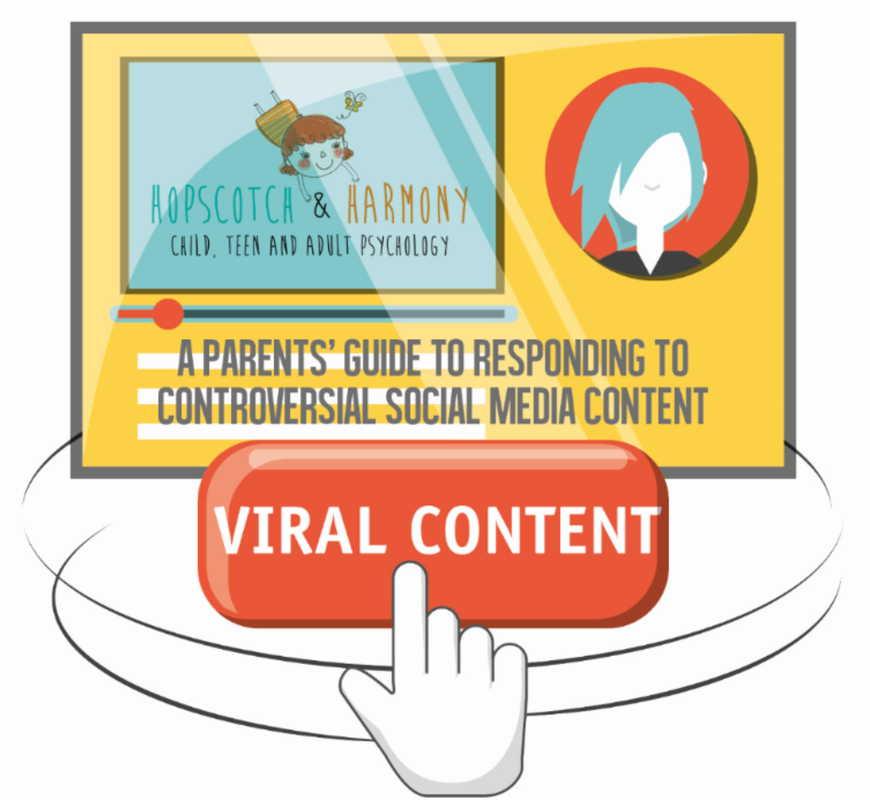 The new year has begun, and already an incident of bad behaviour has gone viral, inspiring public fury and a trial-by-media for the YouTube star Logan Paul. In a video posted on New Year's Eve, Logan Paul and his friends go camping in Aokigahara, unfortunately known as the "Japanese suicide forest", and film themselves discussing and laughing at a deceased person they find. Condemnation was swift and widespread, and Logan Paul had since taken the video down and issued an apology. In doing so, he joins a long list of popular online celebrities that are watched by millions of young people, but only break through to adults when their behaviour generates criticism and outrage. Less than a year before Logan Paul's Japanese outing, Swedish video game vlogger PewDiePie arranged to have "two semi-naked Indian men dancing while holding a banner reading ‘Death to all Jews’” appear on his YouTube channel, which has 59 million individual subscribers and over 4 billion views. Public response was similar, and PewDiePie has returned to vlogging without further problems. Logan Paul himself is following the footsteps of his older brother Jake, who has attracted criticism for posting sexually explicit content and activities including breaching security at the White House in Washington. Meanwhile, machine-generated cartoons depicting popular children's characters in violent and sexual predicaments are spreading rapidly, causing regular outbreaks of parental alarm and media attention. So, let's take a look at what can we do to help children and young people use video media safely, socially, and critically. As always, the first thing is: DON'T PANIC.When a controversial video goes viral, it's easy to get swept up in the reactions of others and simply join the shouting, giving the loudest voices the biggest say for fear of missing out, being left behind, or judged for not reacting. In the case of Logan Paul, some parents are broadcasting their disapproval of the video on social media and, more deliberately, announcing what they're doing to protect their children. While discussions of these issues is important, some of this is virtue signalling - defined in the Oxford Dictionary as "the conspicuous expression of moral values done primarily with the intent of enhancing standing within a social group". The Cambridge Dictionary further explains it as “the popular modern habit of indicating that one has virtue merely by expressing disgust or favour for certain political ideas or cultural happenings”. Social media platforms allow for fast and easy virtue signalling. By publicly denouncing Logan Paul, banning children from YouTube, or declaring they will monitor their child’s every mouse click, these parents signal superiority over other parents and create competition and pressure to follow suit. It can be tempting and simply easier to just go with the majority voice and follow whatever other parents are doing. Resist it. What works for one family or child or parent may not work for another. Children’s' attitudes may change with age, environment, or peers. There is no one-size-fits-all parenting response, because each child is a unique individual, so… DON’T PRESUME YOUR CHILD’S REACTIONSIf your child has watched Logan Paul’s videos or subscribed to his channel, it doesn't automatically mean they agree with everything Logan Paul posts, or that they are even a fan. Anyone who has watched The Bachelor and enjoyed it knows that we can be entertained by content that goes against our values and morals. Psychoanalysts call these “ego-dystonic behaviours”. Lesson time! "Ego-dystonic" refers to thoughts and behaviours that conflict with a person’s ideal self-image. These are impulses or acts that we carry through even though we dislike them and don't want to be associated with them. Some children may find Logan Paul’s videos distressing, offensive, or discomforting, but watch them anyway due to peer pressure, fear of missing out, or morbid curiosity. "Ego-syntonic" is the opposite. These are behaviours and feelings that are in harmony with our identity and ideals. These children may enthusiastically watch Logan Paul’s more outrageous videos in support of their idol (Logan's fans call themselves the "Logang"), may find them genuinely entertaining, revel in schadenfreude (deriving pleasure from another person’s misfortune), watch to see what the fuss is about, or simply can't see anything wrong with the content. Even if that seems unsettling or unfair…. DON’T TELL YOUR CHILD HOW TO FEELChildren are not clones or extensions of their parents. They have their own thoughts, feelings, values and motivations. No matter what you think of Logan Paul, it is important to remember that this isn't about the parents. Every adult has been a child, and we all know a sure-fire way to ensure rebellion is by telling a young person what to do “because I say so”. If a child doesn't understand the reason for a rule or value, they are much less likely to stick with it. What really matters is finding out and understanding how your child feels about Logan Paul, and definitely… DON’T PUNISH YOUR CHILDLogan Paul made a mistake and is being judged in public, not your child. Banning children from an entire social media platform because someone else misused it is counterproductive and punitive. Additionally, children who are banned from something popular online are likely to simply access it through schools and friends instead, with no parental guidance or support. It's very easy to get wrapped up in fears of harmful media leading children astray, but… DON’T ASSUME ALL YOUTUBERS ARE BAD FOR YOUR CHILDGraphic from Juvenoia: Kids These Days For people born last century, it can seem ludicrous that a young person with a camera can become a famous millionaire just by making silly or mundane videos of themselves and posting them online. It can also be confronting to feel disconnected from a younger generation that enjoys these performers and their content, on a new medium that transcends television or radio. Consciously or not, most parents expect, or at least hope, that their children will share their worldview, opinions, and values. For that reason, it can seem like a natural, knee-jerk reaction to ignore, dismiss, or remove something that a child values but a parent doesn’t. So, if your child expresses an interest in something that you dislike or find pointless, fight that urge. Popular YouTubers are peer leaders and role models in the world of social media. Research has consistently shown that children from the age of 8 derive more pleasure from peer relationships than family relationships, and are more easily influenced by friends than by authority figures. This is an important stage of a child's development, as the capacity to develop social bonds outside their family predicts higher rates of overall general functioning and social successes. However, this may mean your child is more likely to admire and listen to the advice of YouTubers than anything offered by their parents or other adults. That can be confronting, but isn't always a bad thing. YouTubers are often creative, productive, and pro-social leaders of change and awareness campaigns. Many are relatable and worthy role-models who are candid with their fans and offer valuable advice on their experience with difficult topics such as mental health and chronic illness. For example, the Draw My Life trend has been cathartic for many people, giving young people an accessible way to understand the lives, struggles, and strength of many others around the world. Other trends are just plain fun! Creating online media content is also a real job, a passion and a legitimate career in a booming industry that could and should be an option for any child today. But there's still bad content on YouTube that my children are exposed to! What now? 5 Things To Do |
Categories
All
Abby Elder
ACT
Adolescence
Alyce Galea
Anger
Anxiety
App Recommendation
Apps
Assertiveness
Attachment
Autism
Autism Assessments
Body Image
Book Recommendation
Breathing
Bullying
Burnout
Child Development
Child Safety
Chronic Pain
Cognitive Assessment
Communication
Conflict Resolution
Co-Parenting
Cyberbullying
Deep Pressure
Depression
Dietetics
Discipline
Eating Behaviour
Eating Disorders
Educational Assessment
Emotional Intelligence
Emotion Regulation
Endometriosis
Exam Stress
Fathers
Fear
First Session
Gaming
Gratitude
Grief And Loss
Grit
Growth Mindset
Hilary Sanders
Home Education
Infant Mental Health
Inspirational Quotes
Internet
Internship
Jacob Spinks
Jessica Cleary
Kara Vermaak
LGBTIQA+
Liz Greig
Martha Mulley
Medicare
Mindfulness
Miscarriage
Motivation
New-years-resolution
Nighttime-fears
Nutrition
Occupational Therapy
OCD
Online Counselling
Parenting
Play Therapy
Provisional Psychologist
Puberty
Relationship
Relaxation
Resilience
Sarah Kruse
School
Self-care
Self-compassion
Self-esteem
Self-harm
Sensory Processing
Separation Anxiety
Sex Education
Sexuality
Shame
Sibling Rivalry
Sleep
Social Media
Social Skills
Sport Psychology
Stress
Suicide
Telehealth
Therapy
Therapy Ideas
Tim Walker
Transgender
Trauma
Video Games
Working Memory
Worry











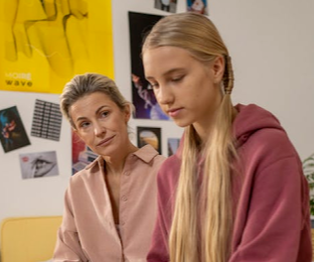

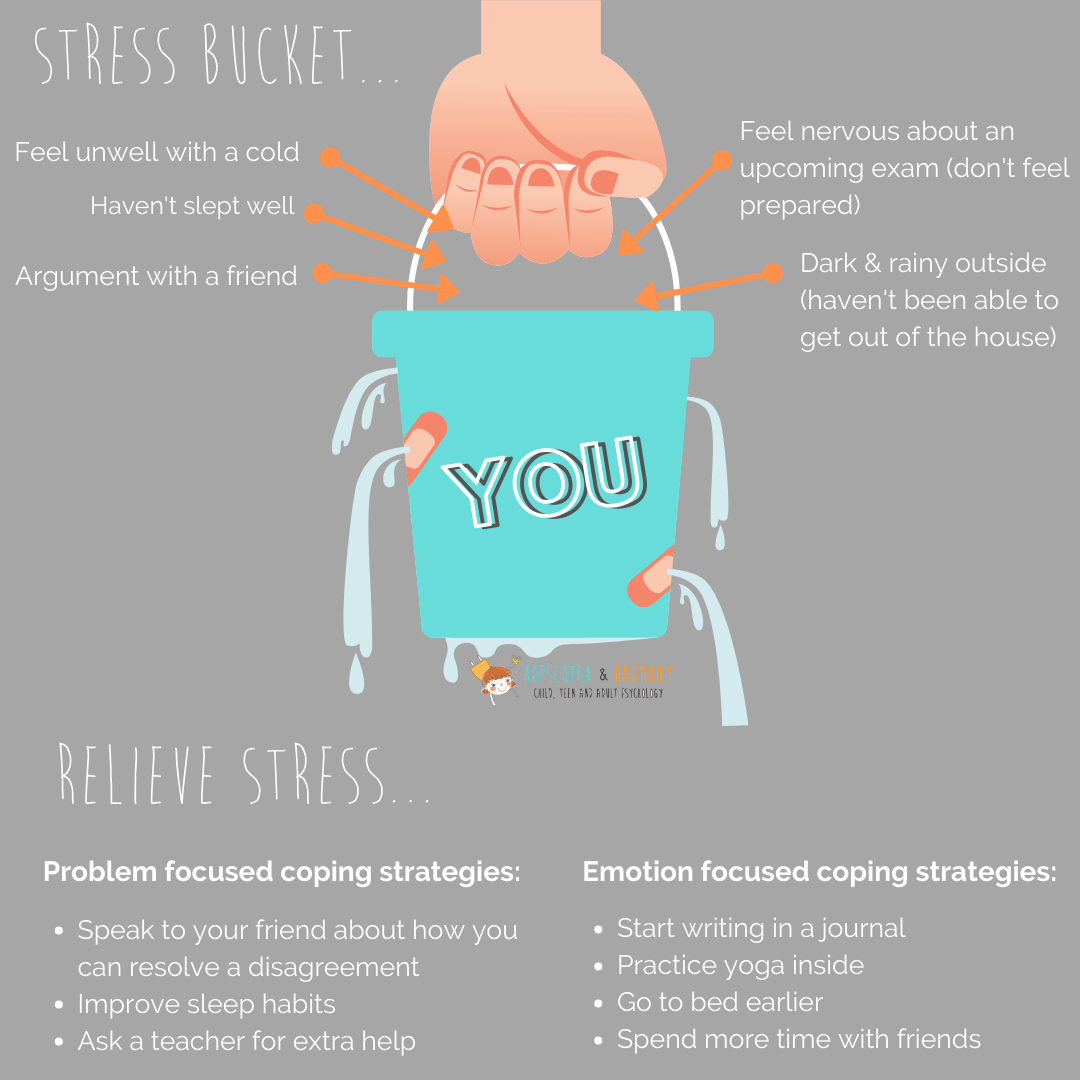




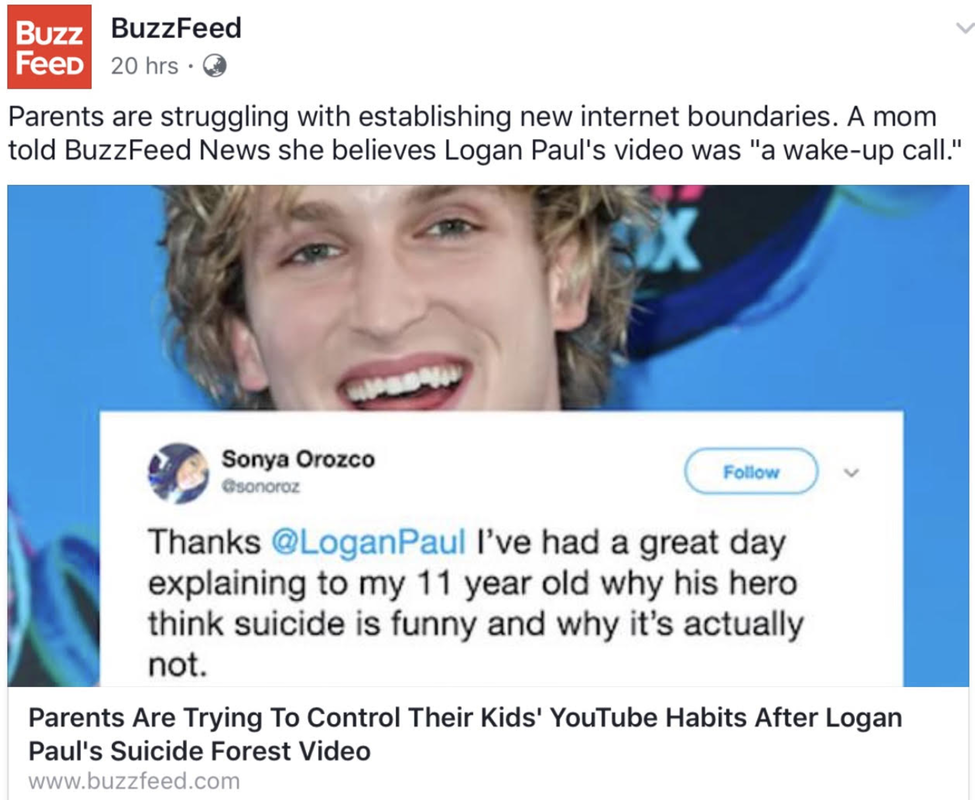


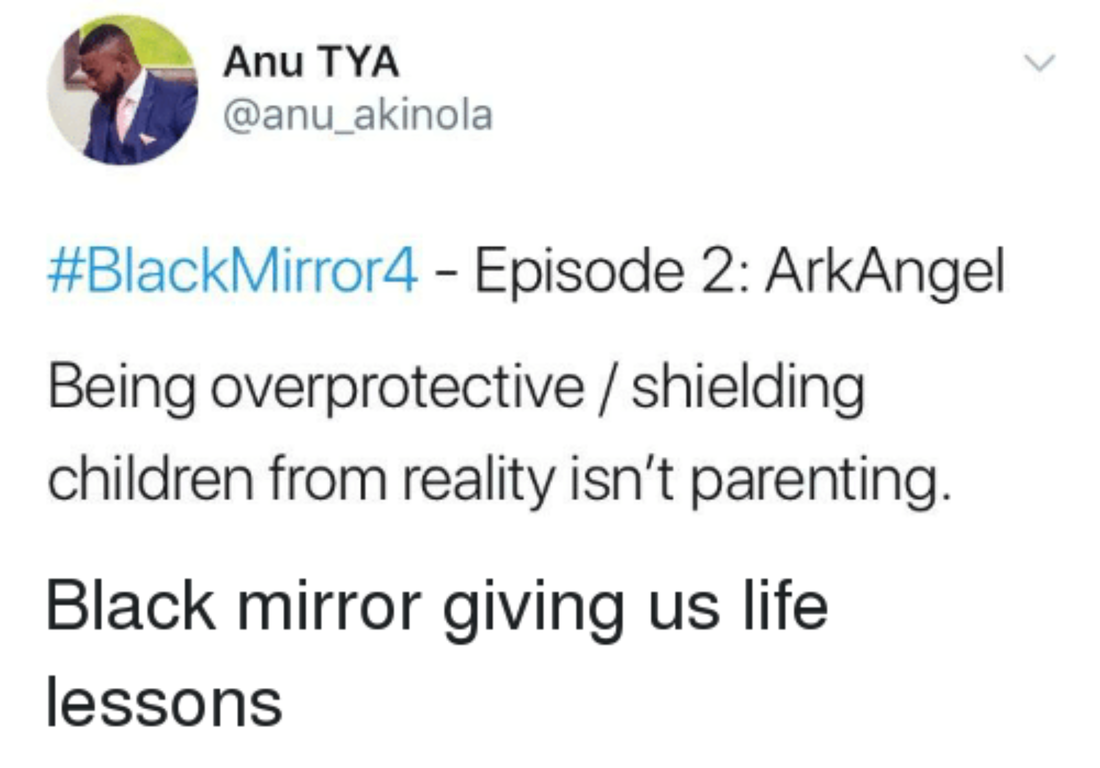
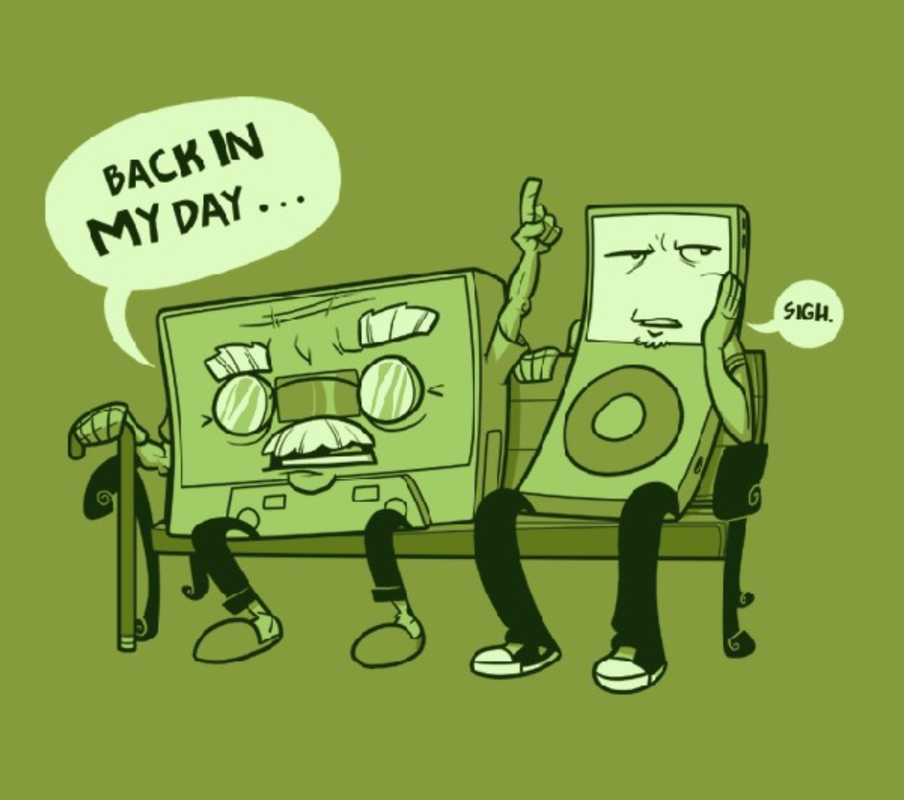


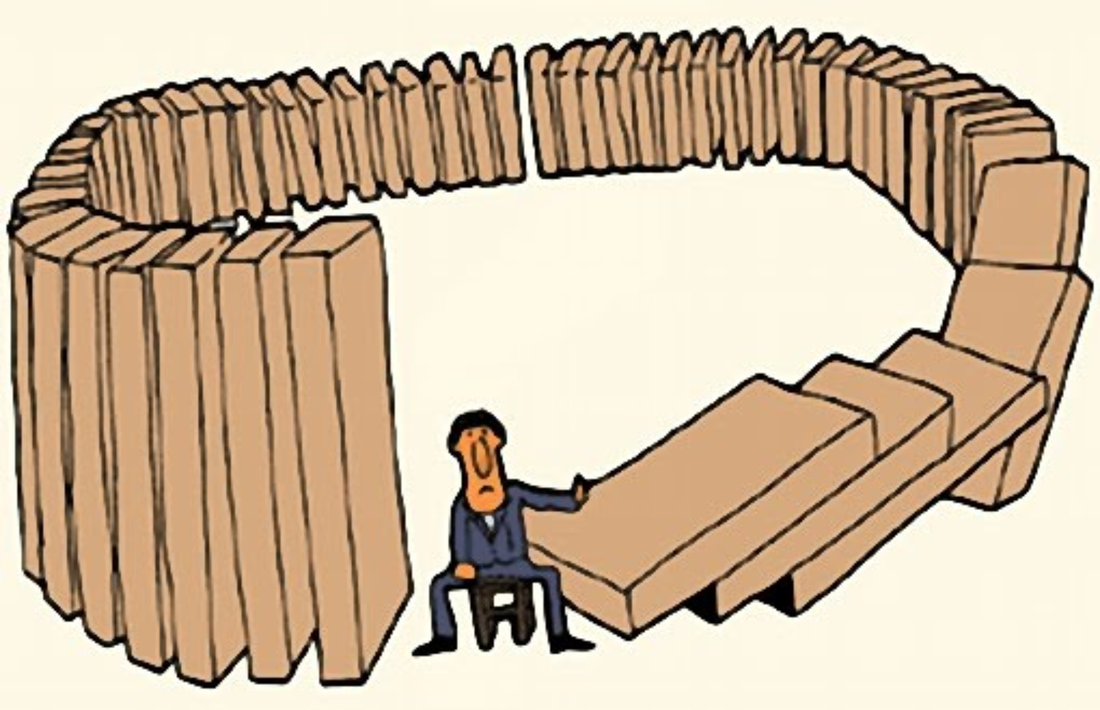

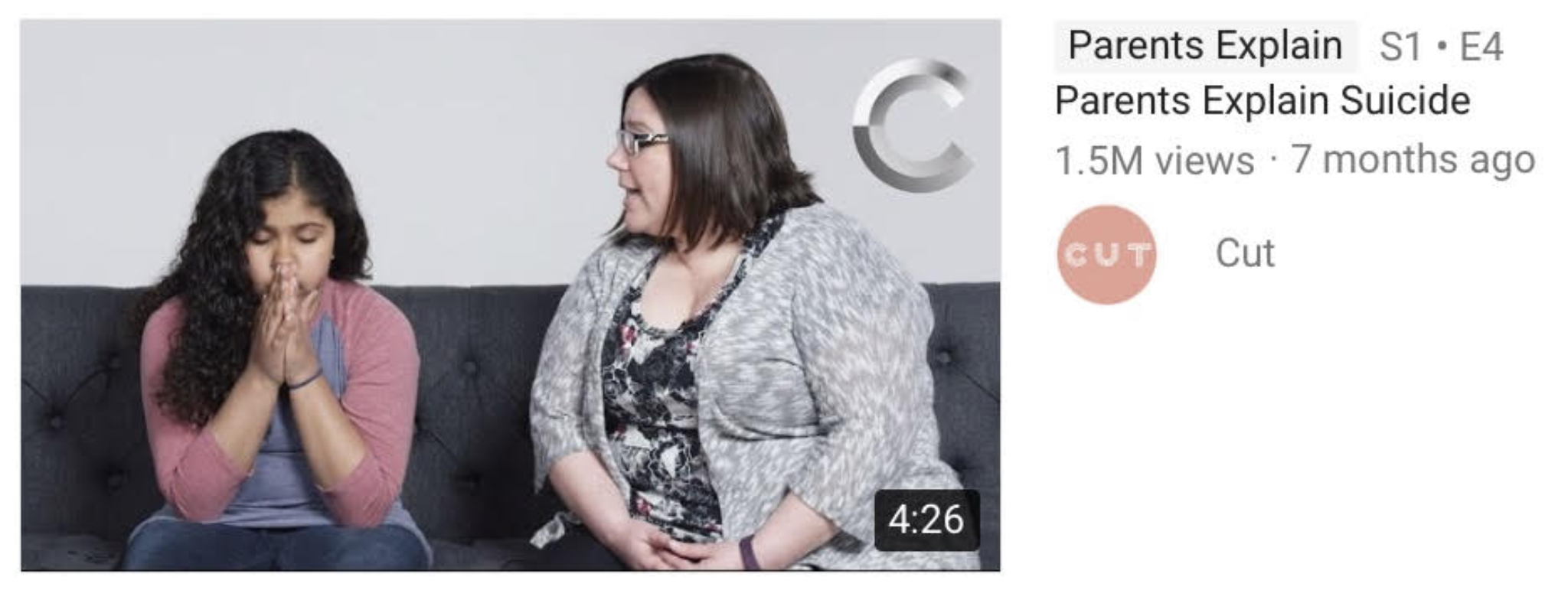
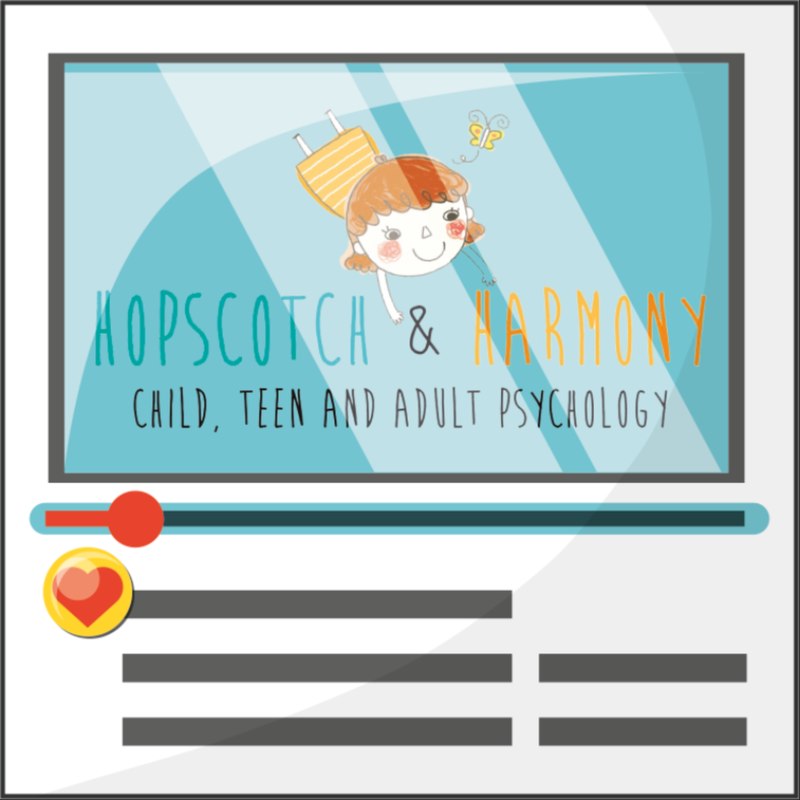
 RSS Feed
RSS Feed
